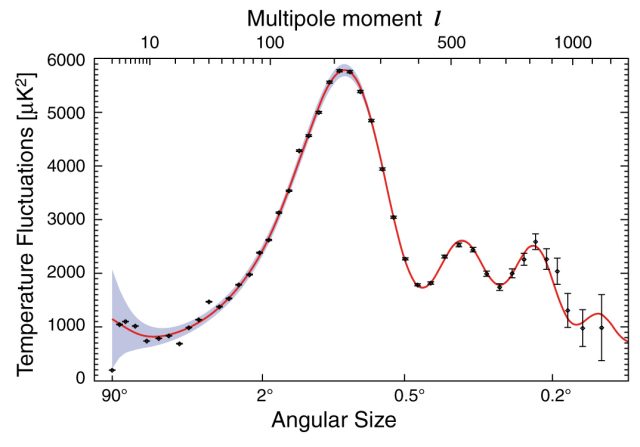Today's Nobel Prize in physics was evenly split between two discoveries and, thus, unevenly split among the three honored. Typically when this happens, the two discoveries are at least somewhat related; that doesn't seem to be the case here, as the Prize Committee has recognized James Peebles for his contributions to theoretical cosmology and Michel Mayor and Didier Queloz for the first clear discovery of an exoplanet orbiting a main sequence star.
The physics of the Big Bang
It's hard to find anything related to our current understanding of the Big Bang that doesn't have Peebles' fingerprints on it. He was at Princeton University (where he remains) when Arnold Penzias and Robert Wilson at nearby Bell Labs had identified the cosmic microwave background (CMB) that was produced in the aftermath of the Big Bang. Not fully aware of the importance of their discovery, Penzias and Wilson talked to the scientists at Princeton. As a result, Peebles was on a paper that described the theoretical underpinnings of the CMB published in the same issue as the write-up describing the CMB's discovery.
Peebles immediately went to work trying to understand the physics underlying different aspects of the Big Bang, showing how temperature and matter density influenced the production of helium in the Universe's earliest moments. Not being satisfied with that, he started considering how these conditions could influence the production of the Universe's first galaxies.
Obviously, that work was incomplete given that, at the time, we didn't understand the role of dark matter. But as the evidence built, Peebles contributed a paper that indicated that our Milky Way's halo wouldn't look like it did without copious amounts of dark matter. His work later helped lay the foundation for our current understanding that dark matter is cold, or moving at speeds far less than that of light.
But Peebles' most important contributions potentially came in helping to understand something called the power spectrum of the CMB. This is the product of a series of oscillations that would have occurred in the immediate aftermath of the Big Bang, produced by interactions among the Universe's materials. In an example cited by the Nobel Committee, gravity would cause an initial contraction. Afterward, radiation drove an ensuing bounce back, which dark matter ignored since it doesn't interact with photons. So when there's yet another contraction, it will take place with dark matter providing a gravity well, influencing the strength of the oscillation.

By carefully measuring these, we've gotten critical information regarding how much of the Universe is occupied by regular matter, how much is dark matter, and so on. Actually measuring the power spectrum and finding out what these percentages are took decades and orbiting instruments, but Peebles was critical to laying the theoretical foundations for it.
Amazingly, much of this work took place before the idea of inflation (which describes the rapid early expansion of the Universe) had been fully developed; Peebles' incorporated newer information on inflation into his ideas as work in the area continued. He also anticipated the return of the cosmological constant, which is a possible explanation for at least some of what we now view as dark energy—even though the evidence for dark energy didn't come until decades later. He and his collaborators were critical to developing our current model of the Universe, which includes dark matter and dark energy.
The Nobel Committee cites Peebles' work as providing a physical foundation for the Big Bang. But it's probably safer to say that Peebles helped enable a two-way conversation between physics and cosmology. In some cases, like with dark energy, Peebles helped show that a cosmological constant can make the Universe work long before the experimental evidence is present. In other cases, he helped incorporate ideas like dark matter as they were developed from other evidence.
And now for something completely different
The other half of the prize skips entirely from theory to practical experimentation. Michel Mayor and Didier Queloz are at the University of Geneva, but the prize honors their work done at France's Haute-Provence Observatory. A method that could allow the detection of exoplanets was first proposed back in the 1950s, but the technology for doing so lagged behind the idea. The concept is that orbiting planets will pulRead More – Source






